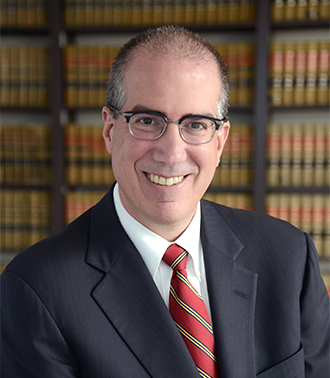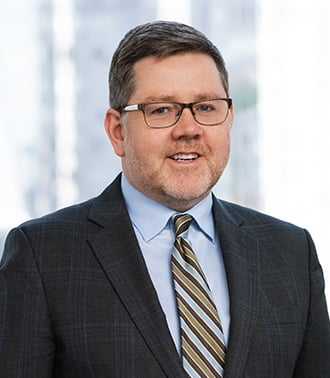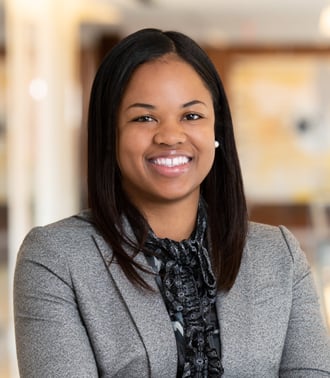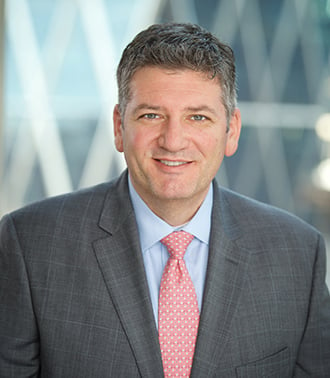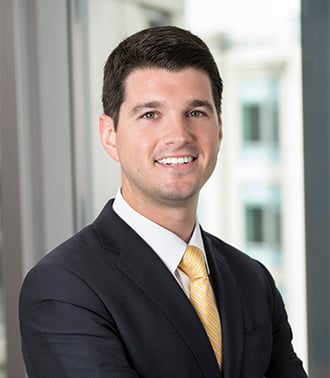OCC and FDIC Take Steps To Refocus Supervision and Tailor the Regulatory Framework for Community Banks
The Trump administration came into office promising to make significant changes to the bank supervisory process — in particular, to promote greater tailoring of supervisory resources and a focus on material financial risks, thereby easing the supervisory and regulatory burden on community banks and savings associations.
To this end, the Office of the Comptroller of the Currency (OCC) and the Federal Deposit Insurance Corporation (FDIC) jointly issued a notice of proposed rulemaking (NPR) that would, by regulation, limit supervisors’ ability to issue matters requiring attention (MRAs) to supervised institutions, and otherwise meaningfully narrow the definition of “unsafe and unsound” practices. If adopted as proposed, the NPR will result in reduced regulatory scrutiny and, even prior to adoption, provides a potential roadmap for institutions that are seeking to have MRAs removed or modified.
Community Bank and Savings Association Relief
The OCC proposed a range of measures that would reduce regulatory and supervisory burdens on community banks and savings associations. This has been a longstanding priority of U.S. Department of the Treasury Secretary Scott Bessent, who has argued that community banks play a critical role in supporting local communities and are unduly subject to overwhelming regulatory burdens.1 It is significant that community bank relief is one of the first areas that the newly confirmed Comptroller Jonathan Gould has prioritized.
More specifically, the OCC:
- Announced that it is removing “fixed examination requirements” for community banks and will instead leave more to the discretion of the responsible examiners.2 Currently, banks are required by law to have a “full-scope” examination every 12 to 18 months, but regulators usually stage in-depth examination activities of particular facets of a bank’s operations over a longer period. The OCC announced that it will no longer require that its examiners adhere to a preset schedule for when these focused examinations will take place, providing more flexibility for community bank supervision.
- Announced that it will reduce its examination expectations for community banks’ provision of retail non-deposit products. Instead of being examined against the more rigorous expectations of the OCC’s Handbook on Retail Non-Investment Products, the OCC will apply the core assessment standards from the Community Bank Supervision booklet of the Comptroller’s Handbook.3
- Tailored its expectations for model risk management by community banks.4 Supervisory expectations for model risk management have ballooned over the past decade, and have encompassed many new models and processes. The OCC clarified that it will not require community banks to conduct annual model validations, and otherwise stated that community banks may now tailor model risk management practices to their risk, business activities, and complexity.
- Issued an NPR expanding the eligibility for expedited or reduced licensing procedures for a new category of “covered community bank or covered savings association.”5 Such institutions would be defined as a national bank or savings association that (1) has less than $30 billion in total assets and is not an affiliate of a depository institution or foreign bank with $30 billion or more in total assets, (2) is “well capitalized,” and (3) is not subject to a cease-and-desist order, a consent order, or a formal written agreement that requires action to improve the institution’s financial condition. Such institutions would benefit from expedited review or reduced requirements on application matters such as conversions from a national bank to savings association or vice versa; exercise of fiduciary powers; branch establishment and relocation; issuance and prepayment of subordinated debt; changes to permanent capital; business reorganizations; and more.
- Issued an NPR to rescind its Fair Housing Home Loan Data System regulation, finding that the regulation is obsolete or redundant of other legal requirements applicable to national banks.6
Safety and Soundness Definition and New Parameters for Issuing Matters Requiring Attention
The OCC and the FDIC — although, notably, not joined by the Federal Reserve at this time — published a joint NPR that would have sweeping implications for the supervisory process, if adopted.7 The new leadership of these agencies has promised to take on a system of bank supervision that, in their view, focused too much attention on process and control problems at supervised institutions and not enough on material financial risks. They blamed some of this focus on the 2023 large bank failures and the agencies’ subsequent post-mortem.
The NPR provides a clearer roadmap to examiners and institutions alike as to what would constitute an unsafe and unsound practice, and clarifies when such a practice merits the issuance of an MRA. Going forward, there will need to be a finding of the possibility of material financial risks before an “unsafe and unsound practice” is found to be in evidence or, with respect to MRA issuance, a violation of a banking law. Perhaps as importantly, the OCC and FDIC propose to codify this change in their regulations by imposing new legal standards on their own examiners as to how they will act when supervising institutions.
- Unsafe and Unsound Practice Definition: The concept of safety and soundness is central to bank supervision, but that term is not codified and has been left to the discretion of the agencies. Many courts have embraced the statement of former Federal Home Loan Bank Board Chair John Horne who stated that “Generally speaking, an ‘unsafe or unsound practice’ embraces any action, or lack of action, which is contrary to generally accepted standards of prudent operation, the possible consequences of which, if continued, would be abnormal risk or loss or damage to an institution, its shareholders, or the agencies administering the insurance funds.”
The NPR defines the term “unsafe and unsound practices” for purposes of supervisory and enforcement activity under 12 U.S.C. § 1818, and adopts a definition narrower than the Horne definition and more focused on material financial risks. Under the NPR, an “unsafe or unsound practice” is defined as “a practice, act, or failure to act, alone or together with one or more other practices, acts, or failures to act, that:
(1) Is contrary to generally accepted standards of prudent operation; and
(2)(i) If continued, is likely to —
(A) Materially harm the financial condition of the institution; or
(B) Present a material risk of loss to the Deposit Insurance Fund; or
(ii) Materially harm the financial condition of the institution.”
Clause (1) is familiar from the Horne standard. However, clause (2) adopts a narrower definition that the agencies believe will be more objective, more transparent, and more consistent in application, and will prevent the proliferation of less meaningful supervisory criticisms.
- Likely: The practice must be “likely” rather than “possible.” The preamble does not specify a minimum percentage of likelihood (e.g., 10% or 51%) needed to meet this threshold, but asks for comment as to whether they should. It says that the likelihood must be more than “merely possible” and must be “sufficiently proximate to a material harm to an institution’s financial condition” to meet the standard. This will make examiners consider, perhaps more carefully than before, just how serious the chance is that a poor process or control failure could result in loss before issuing a criticism that will force a firm to expand time and resources to fix. On the other hand, it would seem to wipe away the possibility that examiners could undertake an enforcement action against a firm for any tail risk, even one that has a low chance of happening but that, if it did, would be material to a firm’s operation. In addition, supervisors may struggle to apply legal concepts such as “sufficiently proximate.”
- Financial Condition: The practices must be related to either a material harm to the financial condition of the institution or a material risk of loss to the Deposit Insurance Fund (DIF). The preamble notes that harm to financial condition includes those that “are likely to directly, clearly, and predictably impact an institution’s capital, asset quality, earnings, liquidity, or sensitivity to market risk.”
- Risk of Loss to the DIF: The preamble contemplates that there may be situations where a practice would likely present a material risk of loss to the DIF but is not likely to materially harm the financial condition of an institution, citing poor contingency funding plans as an example.
- Nonfinancial Risks: The preamble notes that there may be limited situations where nonfinancial risks would amount to unsafe and unsound practices, such as inadequate cybersecurity controls, but only if they are “so severe as to, if continued, be likely” to cause material financial harm.
- Material Harm: The preamble clarifies that minor harm to a firm’s financial condition is not enough to become an unsafe and unsound practice, even if imminent — such action has to be “material” to the financial condition of the firm (capital, asset quality, liquidity, earnings, or sensitivity to market risk) or be likely to present a material risk of loss to the DIF. One might ask whether it is even possible for supervisors to issue criticisms of matters that affect only non-core businesses in light of this definition.
The preamble goes a bit further still and suggests that it is unlikely that any weaknesses will be cited until financial deterioration actually occurs: “Going forward, the agencies expect that it would be rare for an institution to exhibit unsafe or unsound practices … based solely on the institution’s policies, procedures, documentation or internal controls, without significant weaknesses in financial condition.”
- Tailoring: The preamble states that the agencies will tailor their use of the unsafe and unsound standard by institution, and that there will be a “much higher bar” for a community bank than a larger institution.
-
Matters Requiring Attention: The NPR would codify a somewhat lower standard for the issuance of MRAs than for unsafe and unsound practices, but still raise the bar for MRA issuance, based on the agencies’ view that examiners have issued more criticisms than is warranted by true risks to firms’ financial condition, and as a result, have distracted bank management without improving their financial condition.
- Reasonableness Standards: The NPR proposes to adopt a clearer threshold that examiners would need to satisfy before issuing an MRA. The standard would be the same as for the definition of “unsafe and unsound practice” described above, but it replaces the word “likely” with the following phrase: “could reasonably be expected to, under current or reasonably foreseeable conditions.” The agencies state that they expect this would be a lower bar for MRA issuance than for the unsafe and unsound definition, and thus examiners retain a bit more discretion to issue MRAs. Still, the NPR makes clear that the agencies expect examiners to weigh carefully whether the practice could lead to material financial loss before issuing an MRA, with their supervisory judgments guided by the new legal standards “reasonably be expected to” and “reasonably foreseeable.” The language of the courtroom will come to the examination room.
- Violation of Banking Law: The NPR also allows supervisors to issue MRAs in instances of violation of law, but clarifies that it needs to be an “actual” violation of a “banking or banking-related” law or regulation.
- Informal Supervisory Communications: The NPR contemplates that supervisors can continue to communicate other matters to supervised firms that do not meet the standard for an MRA, similar to the current practice of communicating supervisory “observations.” At the same time, the rule states that these observations may not be “treated by the [OCC or FDIC] in a manner similar to” an MRA. The preamble says this means, among other things, that examiners may not expect an action plan to address the observation and may not require that they be reported to a board. They may, however, note the observation in a downgrade decision.
- Composite Rating Downgrades: The NPR also states that the agencies will be more careful about when they will assign supervised institutions to a rating that has regulatory consequences. To ensure that firms are not downgraded to a less-than-satisfactory rating in the absence of a condition meeting the standards above, the preamble says that the agencies expect to downgrade to less than satisfactory only when there is at least one MRA meeting the standard outlined above, or an enforcement action meeting such a standard. In our experience, it would be rare for a firm to be the recipient of such a downgrade without an MRA, but the agencies are leaving nothing to chance.
Takeaways
The NPR sets a clear course — the leadership of the agencies firmly believe that examiners have been issuing more criticisms than necessary and expect examiners to be more focused on material financial risks going forward. What will this mean for financial institutions?
- Fewer MRAs: It is likely that supervisors will feel more constrained in issuing MRAs than before. This should be a benefit for banks that establish good controls on their own, as they will not be distracted by MRAs that they disagree with but still need to expend resources to remediate.
- Ratings Should Trend Up; Enforcement Actions Down: With the reduction in MRAs, the shift in focus away from non-financial risks, and other steps being taken to address CAMELS and other rating systems, ratings of financial institutions should trend up. It remains to be seen whether the new definition of “unsafe and unsound practices” might exclude whole categories of activities previously considered within its scope, such as conflicts of interest or breaches of duty. With that, the threat of enforcement actions should go down, and the expansionary appetite of banks should increase.
- Will It Last? Unlike guidance, the agencies propose to hard-code these standards into their regulations. This will make it harder for any future administration to change without going through an administrative process. One might ask if the definition of “safety-and-soundness” will now be toggled up and down by new leadership like required capital levels.
- Where is the Federal Reserve? The Federal Reserve did not join the joint rulemaking, although Vice Chair Bowman has expressed significant sympathy with the criticisms articulated in the NPR. We can expect that the Federal Reserve will make its views known in the future, but there is, for now, a distinction for firms that are subject to Federal Reserve supervision.
© Arnold & Porter Kaye Scholer LLP 2025 All Rights Reserved. This Advisory is intended to be a general summary of the law and does not constitute legal advice. You should consult with counsel to determine applicable legal requirements in a specific fact situation.
-
U.S. Department of the Treasury, Treasury Secretary Scott Bessent Remarks at the Economic Club of New York (Mar. 6, 2025).
-
OCC, Examinations: Frequency and Scope for Community Banks (Oct. 6, 2025).
-
OCC, Retail Nondeposit Investment Products: Exam Procedures for Community Banks (Oct. 6, 2025).
-
OCC, Model Risk Management: Clarification for Community Banks (Oct. 6, 2025).
-
OCC, Community Bank Licensing Amendments: Notice of Proposed Rulemaking (Oct. 6, 2025).
-
OCC, Rescission of 12 CFR 27, ‘Fair Housing Home Loan Data System’: Notice of Proposed Rulemaking (Oct. 6, 2025).
-
OCC and FDIC, Defining ‘Unsafe or Unsound Practice’ and Revising the Framework for Issuing Matters Requiring Attention and Other Supervisory Communications: Interagency Notice of Proposed Rulemaking (Oct. 7, 2025).


